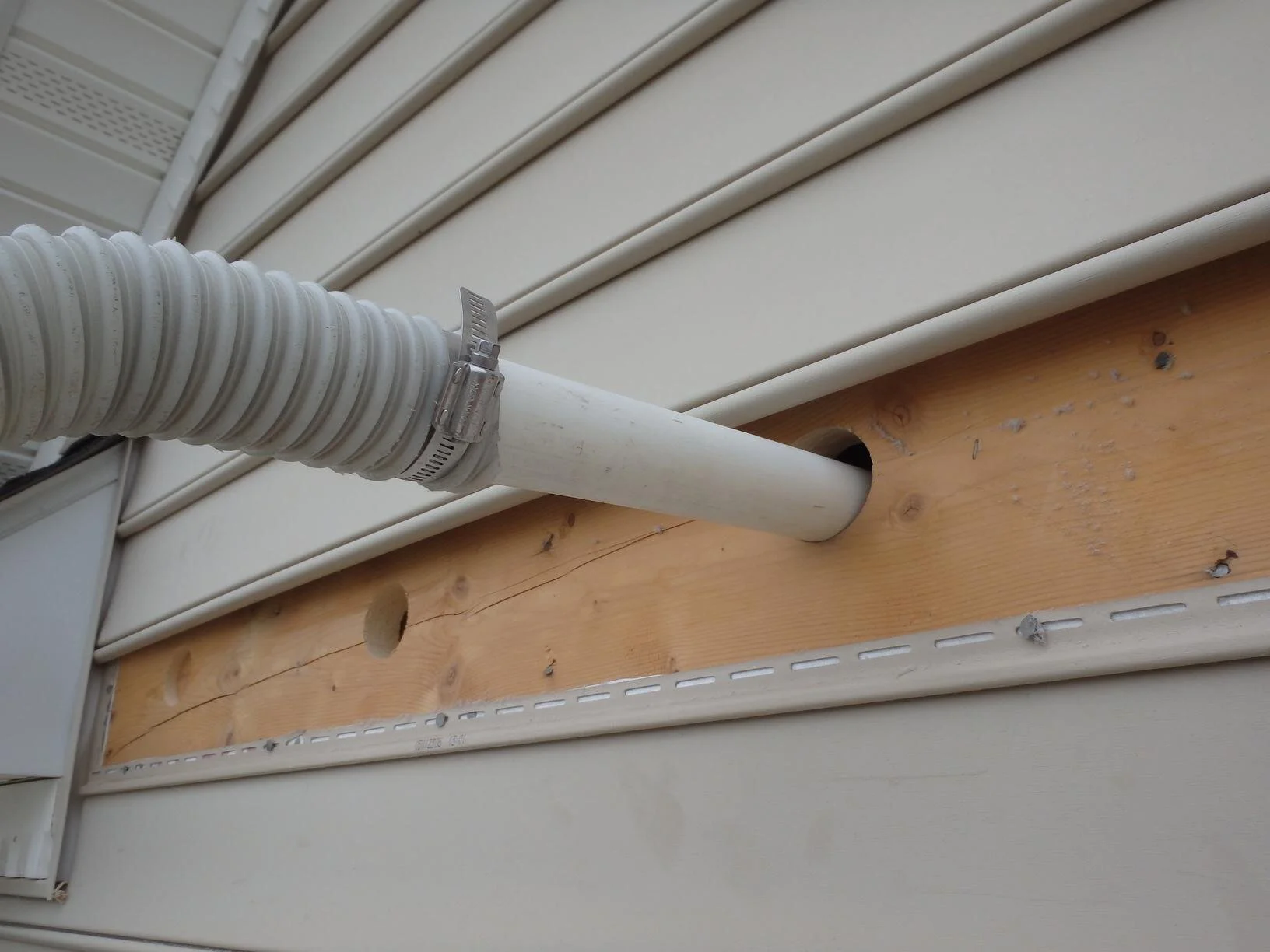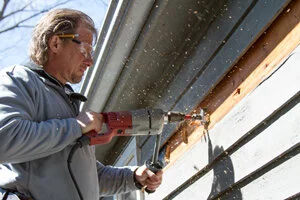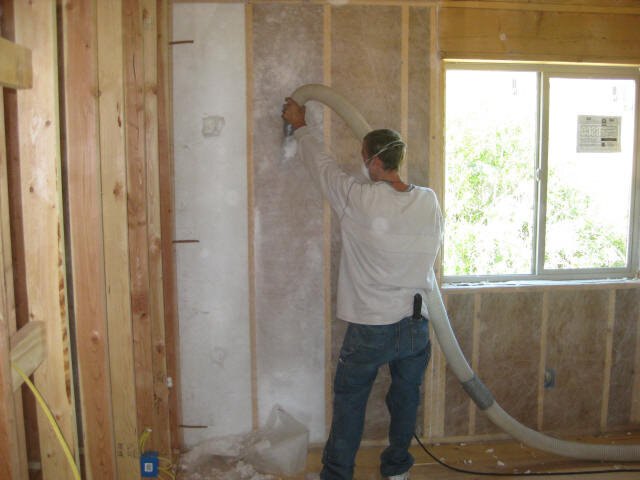Depending on the age of your home, you may or may not have any insulation (that’s right, at all!) in your home’s exterior wall cavities. Not surprisingly, if you make the choice to upgrade your exterior walls’ insulation, there are large savings in both energy costs & increased comfort available, and all for a reasonable cost. At Ecolofty, we can assure you that the return in comfort and in energy savings will more than justify your initial capital outlay.
Here are a few whys and and hows relating to exterior wall insulation:
This thermal image shows a poorly insulated brick house. The warm chimney flue on the the gable end shows up as a vertical red stripe.
While it’s often hard to know what a house contains insulation-wise given the variability in construction methods, builders and renovations that have occurred over time, there a are few general consistencies. For example, if your home was built prior to 1955, it may not have any insulation at all in its exterior walls. If your homes was built between 1955 and 1970, it will probably have an R8 product that is often rock or mineral wool with a paper backing. If your home was built after 1970, R8-R12 fibreglass and cellulose started to be used more often.
Ecolofty’s certified installers will initially try to find areas where there are existing visible holes or openings into the exterior walls (such as under sinks or wherever there is exposed plumbing, a void in your drywall or at electrical fixtures/boxes) to try immediately ascertain if insulation is already present; however, this can be difficult or unreliable.
Energy auditors and insulation contractors have been using infrared cameras to diagnose home-performance problems for over 30 years. Ecolofty’s thermal infrared cameras can very effectively help diagnose a variety of home insulation performance problems, including air leaks, missing insulation, or thermal bridges. Without opening up your walls or ceilings for inspection, one of Ecolofty’s trained specialists can use one of these cameras to locate insulation voids, air leaks, moisture intrusion, thermal bypasses, and/or thermal bridges.
How we insulate your exterior walls:
Once we’ve determined your exterior wall insulation needs and whether we need to approach your exterior walls from either the inside or the outside of the house, our certified Ecolofty installer will drill a sequence of 2-inch holes in the top of your wall between wall joists. Then, using our flexible, made-for-densepacking-cellulose hose, he or she will dense-pack our blown-in cellulose insulation by inserting a flexible pressurized hose down into the bottom of the wall cavity, and then will proceed to gradually back-fill the entire cavity.
Only this type of pressurized back-fill method guarantees maximum insulation in your walls. Dense-packing has the added benefit of being able to direct the hose past any obstructions found in wall cavities. If our Ecolofty installers encounter any cross-blocking in the cavity preventing the cellulose from getting to the bottom of the wall, they will drill another hole below the blocking and fill that section separately.
Once the wall cavity has been filled, all holes will be patched and best efforts will be made to match the existing wall finish/colour.
This house has no insulation at all in its exterior walls. Here, from the outside, 2-inch holes are being drilled at the top of the wall between the wall joists. Blown-in cellulose will be dense-packed from the bottom up within the exterior wall cavities.
It’s a smart and relatively straightforward process to dense-pack blown-in cellulose into the exterior walls of a new home or commercial build.
OUR SERVICES: ATTIC INSULATION / GARAGES / SOUNDPROOFING
REBATES & SAVINGS / TESTIMONIALS / WORK WITH US / CONTACT US





